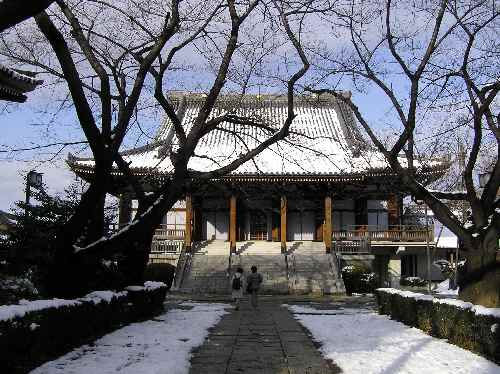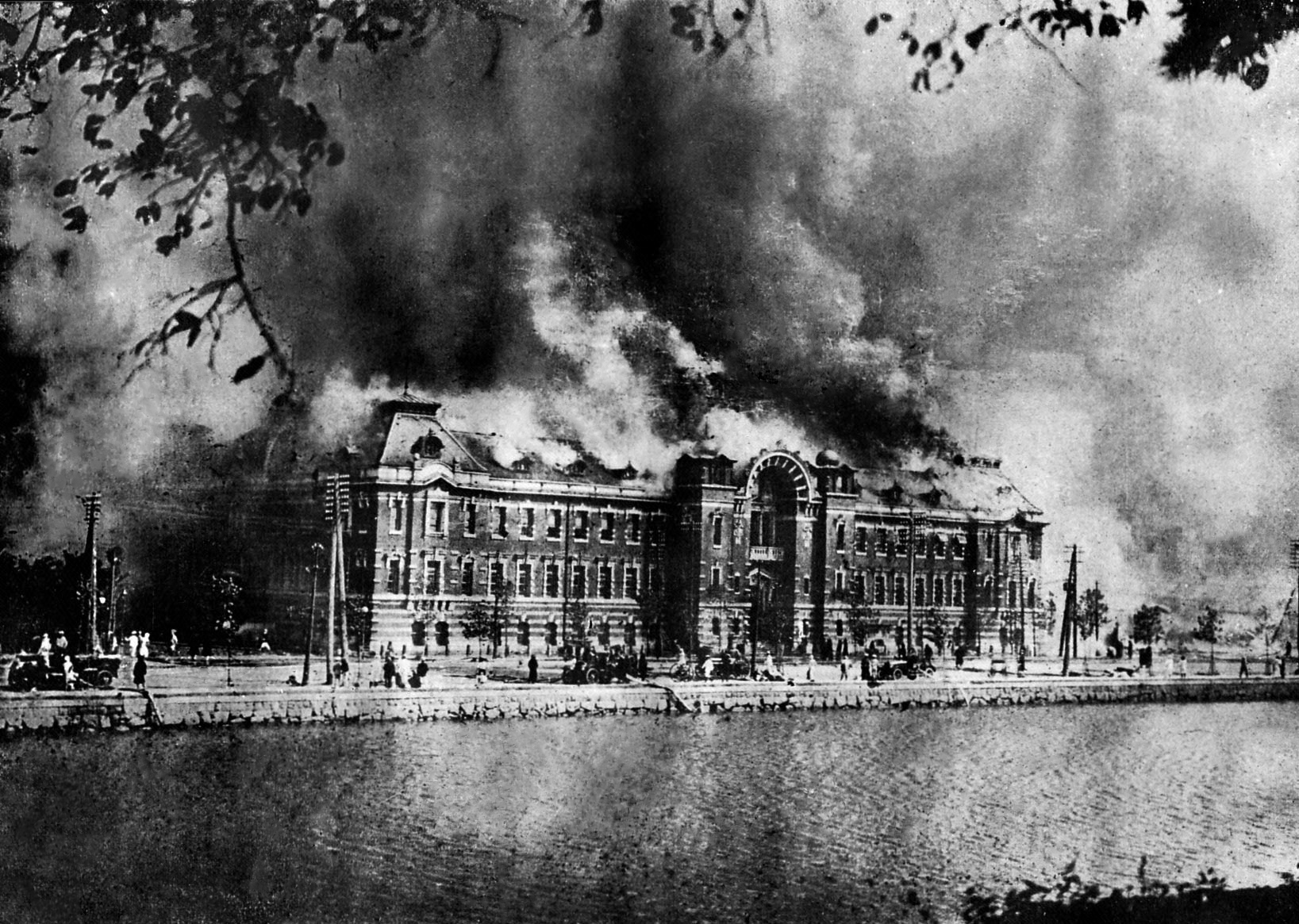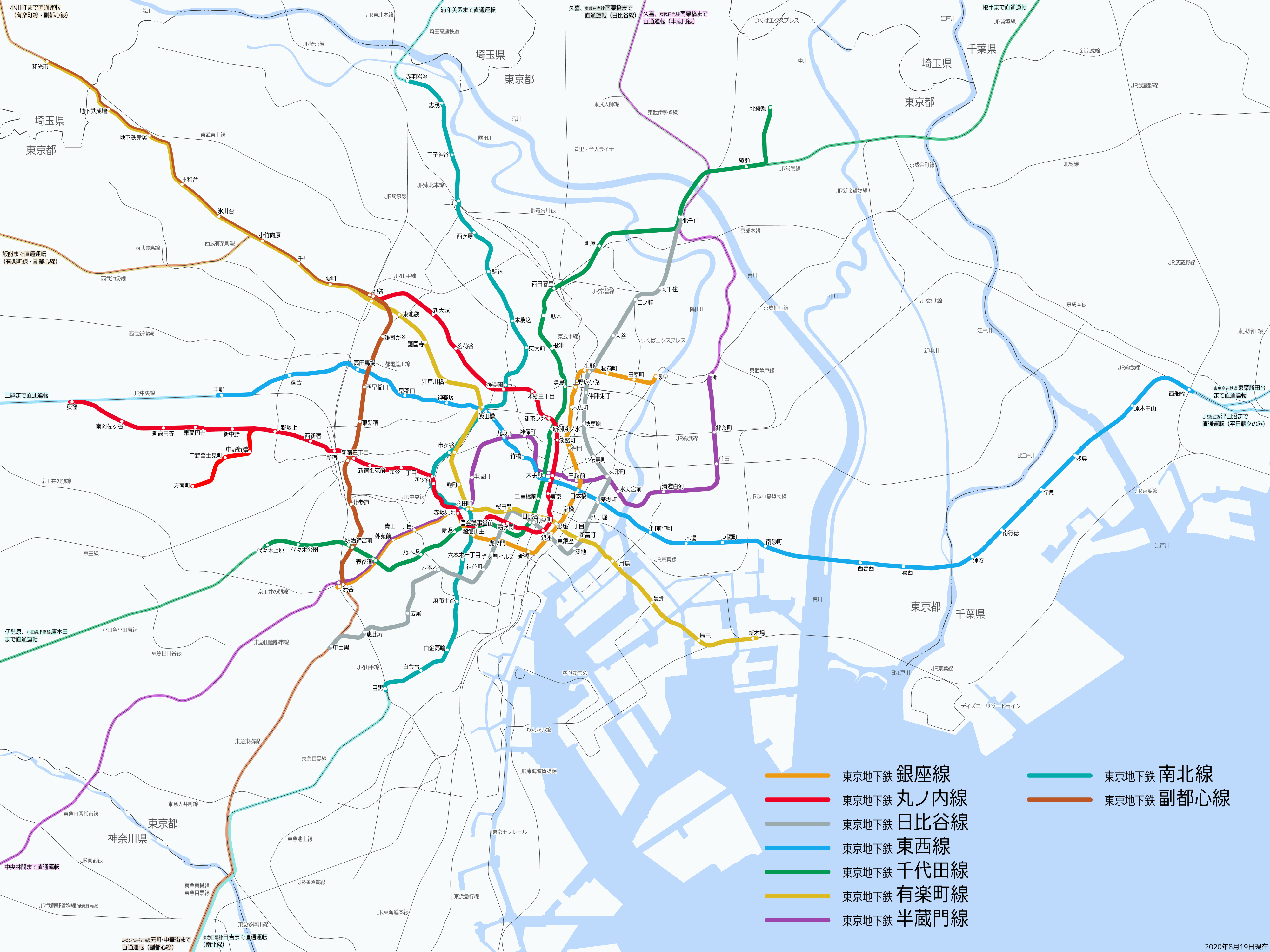|
Hongō-sanchōme Station
is a railway station in Bunkyō, Tokyo, Japan, jointly operated by the Tokyo subway operators Tokyo Metro and Toei Subway. Part of the station originally lay within the Hongō-sanchōme district of Bunkyō Ward when the station was first opened, but following rezoning in 1965, the address of the station became Hongō-nichōme. Lines * Tokyo Metro Marunouchi Line, station number M-21 * Toei Ōedo Line, station number E-08 Station layout The station has two separate sections. There is no underground connection between the platforms, so transfers require surfacing and re-entering. It is easier to change at Kōrakuen. Tokyo Metro The Tokyo Metro section of the station is composed of two side platforms serving two tracks. File:Hongo-sanchome_Station_-_Marunouchi_line_-_ticket_gates_-_2018_3_31.jpg, Marunouchi Line ticket gates, 2018 File:Marunouchi_line_Hongo-Sanchome_Station_-_2022_May_21_various_14_31_25_709000.jpeg, Marunouchi Line platforms, 2022 Toei The Toei sect ... [...More Info...] [...Related Items...] OR: [Wikipedia] [Google] [Baidu] |
Bunkyō
is a Special wards of Tokyo, special ward in the Tokyo, Tokyo Metropolis in Japan. Situated in the middle of the ward area, Bunkyō is a residential and educational center. Beginning in the Meiji period, literati like Natsume Sōseki, as well as scholars and politicians have lived there. Bunkyō is home to the Tokyo Dome, Judo's Kodokan Judo Institute, Kōdōkan, and the University of Tokyo's Hongō campus, Hongo Campus. It was formed in 1947 as a merger of Hongo and Koishikawa wards following Tokyo City's Local Autonomy Act, transformation into Tokyo Metropolis. The modern Bunkyo ward exhibits contrasting Shitamachi and Yamanote geographical and cultural division. The Nezu and Sendagi neighborhoods in the ward's eastern corner is attached to the Shitamachi area in Ueno. On the other hand, the remaining areas of the ward typically represent Yamanote districts. As of 2022, the ward has a population of 240,069 (including about 8,500 foreign residents), and a population density of . ... [...More Info...] [...Related Items...] OR: [Wikipedia] [Google] [Baidu] |
Tokyo
Tokyo, officially the Tokyo Metropolis, is the capital of Japan, capital and List of cities in Japan, most populous city in Japan. With a population of over 14 million in the city proper in 2023, it is List of largest cities, one of the most populous urban areas in the world. The Greater Tokyo Area, which includes Tokyo and parts of six neighboring Prefectures of Japan, prefectures, is the most populous metropolitan area in the world, with 41 million residents . Lying at the head of Tokyo Bay, Tokyo is part of the Kantō region, on the central coast of Honshu, Japan's largest island. It is Japan's economic center and the seat of the Government of Japan, Japanese government and the Emperor of Japan. The Tokyo Metropolitan Government administers Tokyo's central Special wards of Tokyo, 23 special wards, which formerly made up Tokyo City; various commuter towns and suburbs in Western Tokyo, its western area; and two outlying island chains, the Tokyo Islands. Although most of the w ... [...More Info...] [...Related Items...] OR: [Wikipedia] [Google] [Baidu] |
Island Platform
An island platform (also center platform (American English) or centre platform (British English)) is a station layout arrangement where a single platform is positioned between two tracks within a railway station, tram stop or transitway interchange. Island platforms are sometimes used between the opposite-direction tracks on twin-track route stations as they are cheaper and occupy less area than other arrangements. They are also useful within larger stations, where local and express services for the same direction of travel can be accessed from opposite sides of the same platform instead of side platforms on either side of the tracks, simplifying and speeding transfers between the two tracks. The historical use of island platforms depends greatly upon the location. In the United Kingdom the use of island platforms on twin-track routes is relatively common when the railway line is in a cutting or raised on an embankment, as this makes it easier to provide access to the platf ... [...More Info...] [...Related Items...] OR: [Wikipedia] [Google] [Baidu] |
Side Platform
A side platform (also known as a marginal platform or a single-face platform) is a platform positioned to the side of one or more railway tracks or guideways at a railway station, tram stop, or transitway. A station having dual side platforms, one for each direction of travel, is the basic design used for double-track railway lines (as opposed to, for instance, the island platform where a single platform lies between the tracks). Side platforms may result in a wider overall footprint for the station compared with an island platform, where a single width of platform can be shared by riders using either track. In some stations, the two side platforms are connected by a footbridge or tunnel to allow safe access to the alternate platform. While a pair of side platforms is often provided on a dual-track line, a single side platform is usually sufficient (trains are usually only boarded from one side) for a single-track line. Layout Where the station is close to a level crossing (g ... [...More Info...] [...Related Items...] OR: [Wikipedia] [Google] [Baidu] |
Tokyo Metro
The Tokyo Metro () is a major rapid transit system in Tokyo, Japan, operated by the #Organization, Tokyo Metro Co. With an average daily ridership of 6.52 million passengers (as of 2023), the Tokyo Metro is the larger of the Tokyo subway, two subway operators in the city, the other being the Toei Subway, with 2.85 million average daily rides. Organization Tokyo Metro is operated by , a joint-stock company jointly owned by the Government of Japan and the Tokyo Metropolitan Government. The company, founded as a part of then-Prime Minister Junichiro Koizumi's policy of converting statutory corporations into Joint-stock company, joint-stock companies, replaced the , commonly known as Eidan or TRTA, on April 1, 2004. TRTA was administered by the Ministry of Land, Infrastructure and Transport (Japan), Ministry of Land, Infrastructure and Transport, and jointly funded by the national and metropolitan governments. It was formed in 1941 as a part-nationalization of the Tokyo Undergrou ... [...More Info...] [...Related Items...] OR: [Wikipedia] [Google] [Baidu] |
Toei Subway
The is one of two subway systems in Tokyo, Japan, the other being the Tokyo Metro. The Toei Subway lines were originally licensed to the Teito Rapid Transit Authority (the predecessor of Tokyo Metro) but were constructed by the Tokyo Metropolitan Government following transfers of the licenses for each line. The subway has run at a financial loss for most of its history due to high construction expenses, particularly for the Toei Ōedo Line , Oedo Line. However, it reported its first net profit of ¥3.13bn in FY2006. The Toei Subway is operated by the Tokyo Metropolitan Bureau of Transportation. Tokyo Metro and Toei trains form completely separate networks. While users of prepaid rail passes can freely interchange between the two networks, regular ticket holders must purchase a second ticket, or a special transfer ticket, to change from a Toei line to a Tokyo Metro line and vice versa. The sole exceptions are on the segment of the Toei Mita Line between Meguro and Shirokane-Takana ... [...More Info...] [...Related Items...] OR: [Wikipedia] [Google] [Baidu] |
Tokyo Metro Marunouchi Line
The is a Rapid transit, subway line in Tokyo, Japan, operated by Tokyo Metro. The line runs in a U-shape between Ogikubo Station in Suginami, Tokyo, Suginami and Ikebukuro Station in Toshima, Tokyo, Toshima, with a branch line between Nakano-Sakaue Station and Hōnanchō Station. The official name is . The line was named after the Marunouchi business district in Chiyoda, Tokyo, under which it passes. On maps, diagrams and signboards, the line is shown using the color red, and its stations are given numbers using the letters "M" for the main line and "Mb" for the branch line. Overview The Marunouchi Line is the second line to be built in the city, and the first one constructed after the Second World War. The route is U-shaped, running from Ogikubo Station in the west of the city via the commercial and administrative district of Shinjuku through to the Marunouchi commercial center around Tokyo Station, before turning back and heading to Ikebukuro. Along with the Tokyo Metro Ginza ... [...More Info...] [...Related Items...] OR: [Wikipedia] [Google] [Baidu] |
Toei Ōedo Line
The is a rapid transit railway line of the municipal Toei Subway network in Tokyo, Japan. It commenced full operations on December 12, 2000; using the Japanese calendar this reads "12/12/12" as the year 2000 equals Heisei 12. The line is completely underground, making it the second-longest railway tunnel in Japan after the Seikan Tunnel. On maps and signboards, the line is shown in magenta. Stations carry the letter "E" followed by a two-digit number inside a more pinkish ruby circle. In fiscal year 2023, the Ōedo Line had the highest daily ridership in the Toei network, serving an average of 836,179 passengers per day. Despite this, it was the only Toei subway line to operate at a loss, incurring a deficit of 3.2 billion yen. Overview The Ōedo Line is the first Tokyo subway line to use linear motor propulsion (and the second in Japan after the Osaka Metro Nagahori Tsurumi-ryokuchi Line), which allows it to use smaller cars and smaller tunnels (a benefit similarly achieved ... [...More Info...] [...Related Items...] OR: [Wikipedia] [Google] [Baidu] |
Railway Stations In Japan Opened In 1954
Rail transport (also known as train transport) is a means of transport using wheeled vehicles running in tracks, which usually consist of two parallel steel rails. Rail transport is one of the two primary means of land transport, next to road transport. It is used for about 8% of passenger and freight transport globally, thanks to its energy efficiency and potentially high speed.Rolling stock on rails generally encounters lower frictional resistance than rubber-tyred road vehicles, allowing rail cars to be coupled into longer trains. Power is usually provided by diesel or electric locomotives. While railway transport is capital-intensive and less flexible than road transport, it can carry heavy loads of passengers and cargo with greater energy efficiency and safety. Precursors of railways driven by human or animal power have existed since antiquity, but modern rail transport began with the invention of the steam locomotive in the United Kingdom at the beginning of the 19th c ... [...More Info...] [...Related Items...] OR: [Wikipedia] [Google] [Baidu] |







